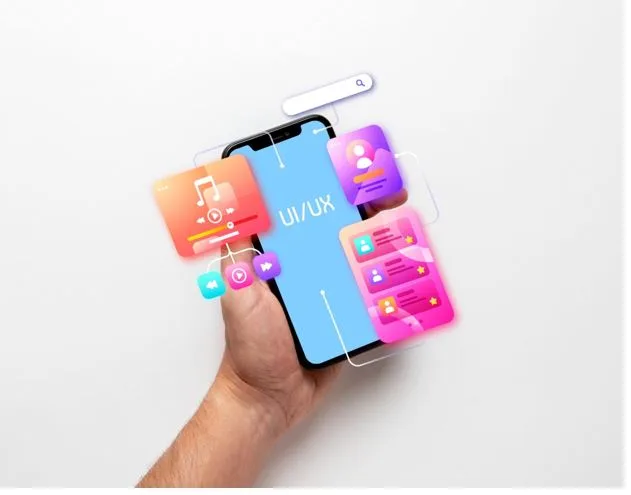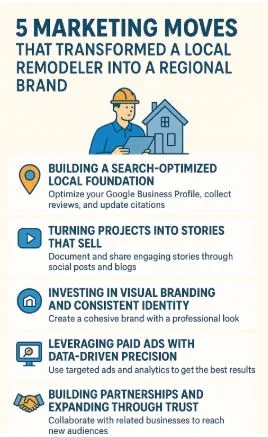10 Top Trends in Mobile App Development in 2025!
The mobile app ecosystem is transforming fast. Now in 2025, developers are no longer chasing screen sizes or debating iOS vs Android. They’re building for a landscape where AI copilots write code, cross-platform frameworks ship faster than ever, and edge-native apps change how we think about performance. If you’re a startup founder, CTO, or product manager, these trends aren’t just buzz—they’re what will shape your roadmap (and your competitors’) for the next 12 months.
Let’s unpack the top mobile app development trends defining 2025—and why custom application development remains central to staying ahead.
1. AI-Native Apps Are No Longer Optional
AI is not an “add-on” in 2025—it’s baked into the app experience from day one. Think ChatGPT-level assistants built into productivity tools, context-aware shopping recommendations in eCommerce apps, or real-time predictive routing in travel platforms. The smartest apps now learn with the user, not just respond to input.
Behind the scenes, AI copilots like GitHub Copilot X and Replit Ghostwriter are speeding up app development itself. Developers are pairing with LLMs to auto-generate boilerplate, run tests, and debug in real-time.
But here’s the kicker: your users expect AI. Whether it’s customer service chatbots, intelligent onboarding, or voice interfaces, your app’s intelligence is part of the UX now—not a feature.
Stack to Watch: OpenAI API, Google Gemini, Firebase ML Kit, and on-device LLMs using Apple CoreML or TensorFlow Lite.
2. Cross-Platform Development Becomes the Default
In 2025, mobile-first doesn’t mean mobile-only. The lines between mobile, web, and desktop apps have officially blurred. Companies want a single codebase that performs well across all platforms without rebuilding from scratch—and the tools are finally catching up.
Flutter 4.0, React Native (now deeply integrated with Expo and M1/M2 Macs), and Microsoft’s MAUI have matured into robust frameworks for scaling across devices. Add AI-assisted optimization and instant hot reload, and dev cycles are shrinking.
The mobile app decision isn’t “native or not?”—it’s “how fast can we ship to every screen?”
Why This Matters: Faster time to market. Lower dev costs. Easier maintenance. What used to take three separate teams can now be managed with one well-trained squad.
3. Privacy by Design Isn’t Optional—It’s Law
With the rollout of more aggressive privacy laws in the U.S., EU, and APAC, 2025 is the year “Privacy by Design” shifts from best practice to survival mechanism. If your mobile app handles user data—especially health, finance, or location data—you’ll need real-time consent management, local storage policies, and end-to-end encryption. That’s why top software development company now build privacy-first architecture into every phase of the development cycle to stay compliant, earn and retain user trust in a data-conscious market.
Apple’s iOS 18 has tightened App Store requirements, while Android 15 mandates clearer user disclosures for background location and biometric data. Fines are stiff, and public trust is fragile.
Dev Reality: You need a privacy-first architecture that’s as seamless as your UI. Tools like OneTrust SDKs, Auth0, and in-app privacy dashboards (à la Apple Health) are becoming table stakes.
4. 5G and Edge Computing Redefine Real-Time
Forget loading spinners. With widespread 5G adoption and the rise of edge-native services, real-time now means real-time. Whether it’s multiplayer gaming, remote healthcare, or mobile AR, edge computing is minimizing latency and offloading processing to local nodes.
In practical terms, this lets apps do more with less. Image processing, voice recognition, and video streaming can now happen closer to the user—reducing battery drain and speeding up interactions.
Use Case Explosion: Mobile banking apps processing transactions in milliseconds. AR/VR apps with zero perceptible lag. Logistics platforms with live geolocation data across fleets.
Edge is no longer just a buzzword—it’s the infrastructure behind next-gen UX.
5. PWAs & Instant Apps Get a Second Life
Progressive Web Apps (PWAs) and Android Instant Apps didn’t quite dominate the 2020s the way some predicted—but in 2025, they’re back with real firepower. Why? Two reasons: browser capabilities and user friction.
PWAs now offer near-native performance thanks to improved service workers, background sync, push notifications, and advanced caching. Meanwhile, Android Instant Apps enable frictionless onboarding—users tap a link, use the app instantly, and decide later if they want to install.
2025 Strategy: Use PWAs for quick MVPs and B2B tools. Use Instant Apps to reduce drop-off in your user acquisition funnel. You get speed, cost-efficiency, and reach—without store dependencies.
6. Voice and Gesture Interfaces Go Mainstream
In 2025, typing is optional. Voice-first interfaces and gesture-based navigation are no longer limited to accessibility features—they’re becoming standard interaction layers.
Thanks to better NLP models and improved on-device processing, voice commands feel more natural and less robotic. Google Assistant and Siri have become significantly more context-aware. Meanwhile, apps like Zoom and Spotify now integrate gesture controls for in-car or smart TV experiences.
Why It Matters for Devs: You’re not just building UIs anymore. You’re building multimodal interfaces. Your app should support voice, touch, swipe, and soon—vision-based gestures (hello, Vision Pro).
Tools to Watch: Amazon Lex, Apple SiriKit, Android’s Voice Interaction APIs, and Unity’s gesture recognition SDK.
7. App Clips, Widgets, and Micro-Interactions Drive Engagement
Micro-interactions are now macro priorities. Users don’t want to open full apps for every task—they want speed, minimalism, and context-aware functionality. That’s where features like App Clips (iOS), Instant Apps (Android), and home screen widgets come in.
In 2025, these tools aren’t just gimmicks—they’re key to daily engagement. A food delivery widget that reorders your favorite meal. An App Clip that lets you scan-and-pay at a parking meter. A fitness app widget showing today’s step count and hydration levels.
Pro Tip: Design for “1-action interactions.” The more seamless the journey, the higher your stickiness metrics go.
8. Hyper-Personalization Powered by AI + Behavioral Data
Hyper-personalization has evolved far beyond basic name-in-subject-line logic. In 2025, your app needs to respond to how and when a user behaves—not just who they are.
AI models now analyze micro-interactions, timing, device usage patterns, and purchase intent to shape the user journey in real time. Think Netflix-style smart recommendations, Duolingo’s adaptive lesson flows, or eCommerce apps tweaking UX based on scroll velocity.
Why It Converts: More relevance. Less friction. Higher lifetime value.
Stack to Explore: Amplitude, Mixpanel, Firebase Analytics + AI, and Segment integrated with OpenAI or Claude.
9. Subscription Models and Microtransactions Dominate Monetization
Forget one-time purchases. The mobile economy in 2025 is built on recurring revenue and bite-sized payments. From fitness to fintech, apps are now bundling premium features into tiered subscriptions or offering value-added microtransactions.
But users are savvy—they want transparency and frictionless checkout. Apple Pay, Google Pay, and Stripe’s mobile SDKs now support biometric checkout, auto-renew logic, and real-time pricing updates based on behavior.
What This Means: Monetization is product design. How and when you surface upsell offers can make or break retention. Dynamic pricing, trials, and limited-time perks drive conversions.
10. Developer Experience (DX) Gets Executive Attention
Finally, the tools developers use are getting boardroom visibility. In 2025, developer experience isn’t just a backend concern—it’s a product strategy. Companies that prioritize clean tooling, fast CI/CD pipelines, and modular architecture are shipping faster and hiring better.
AI-assisted IDEs, instant device testing on cloud emulators, and component libraries (via Bit, Storybook, or Figma Dev Mode) are reducing build times and increasing code reusability.
Smart Companies Invest In: Tooling that reduces handoff friction between design and dev, CI/CD pipelines with built-in QA, and developer analytics to spot bottlenecks.
Final Thoughts
The 2025 mobile landscape rewards speed, intelligence, and seamlessness. Users expect smarter features, instant feedback, and frictionless interactions. Developers need AI-native workflows, cross-platform delivery, and privacy-centric architectures. And companies must treat app development not as a technical cost center, but as a direct path to user value and business growth.
If you’re still treating mobile apps like standalone products, you’re already behind. In 2025, the app is the business—and custom application development is how the most competitive teams are building smarter, faster, and more adaptive products that actually move the needle.



![[Big Launch]HCapital by PhillipCapital — Alex Lau Jian Hua Leads the 9th “Institutional Group Strategy · 400% Compounding Plan” Now Live!](https://businesnewswire.com/wp-content/uploads/2025/06/az-174.webp)

